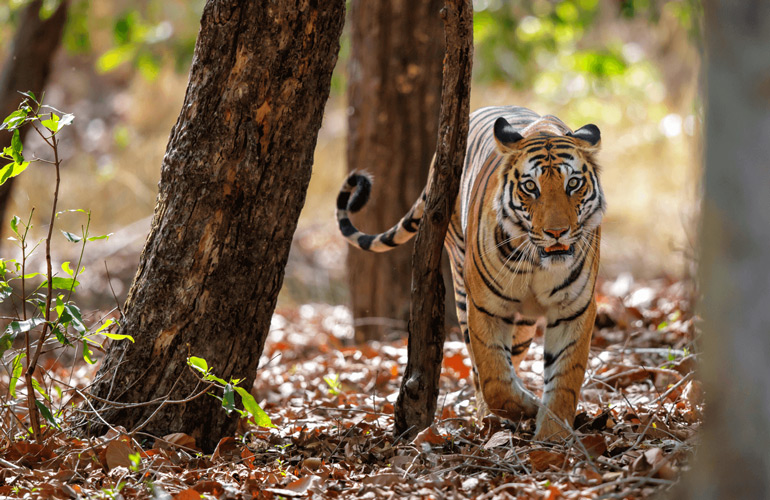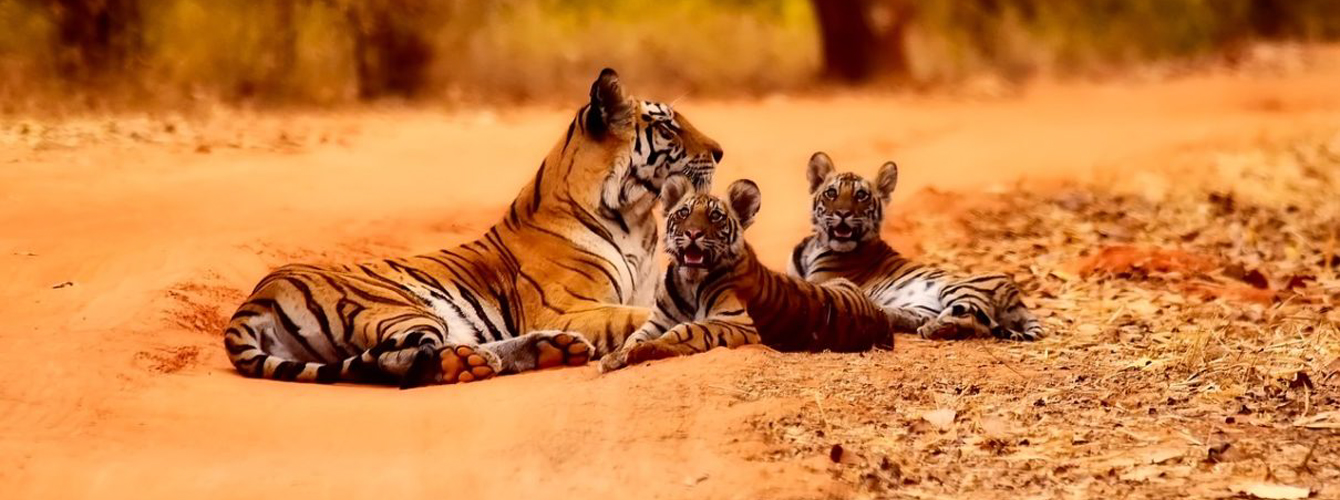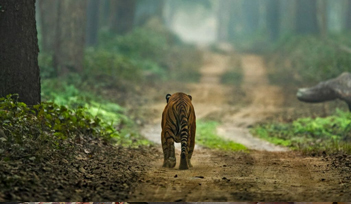Home > PROJECT TIGER
PROJECT TIGER

Tiger hunting had all started as 'fun and games' during the days of the Maharajas and it continued during British rule in India. Shikars (organised hunting parties) were held almost every other day in India, and people from all over the world came here to kill these handsome animals. One Maharaja actually boasted of having shot, 1,150 tigers! That will give you an idea of how dangerous life had become for tigers.
Post independence, shikar was banned but things became even worse as skin traders moved in to see what they could get out of the whole ugly business. So the killing went on.
In the year 1969, the tiger was listed as a species in grave danger and in 1970, a total ban was imposed on tiger killing when the government realised how very few tigers were actually left. Still some people protested. They felt that they were being told what to do and what not to do and that their `rights' were being taken away. On April 10, 1972 a representative of the World Wildlife Fund, a very active and concerned person called Guy Mountfort went to see the Prime Minister of India, late Mrs. Indira Gandhi and asked for her support. Late Mrs. Gandhi, herself a wildlife lover, replied enthusiastically, "Yes." She was all for doing something for India's most magnificent animal. The battle was won and Project Tiger was born. Initially, nine large `Reserves' were chosen, later two were added and today we have 29 Reserves. Here all animals receive protection, even butterflies, birds, insects and snakes. Thus in the name of one animal, the tiger, a variety of living creatures have been saved. But let's go inside a forest to get a closer look at tigers.
The idea was to try and bring tiger numbers back to safety, for it was found that only 2,000 tigers existed all over the country! If this step had not been taken, the tiger would almost certainly have been wiped off the face of the earth! For almost twenty years, they managed to help these animals, and there were more tigers in the wild than ever before.
But tigers are now in trouble all over again. It is sad that the success of Project Tiger is dimming today because in many cases, the government itself is cutting down the tiger's home. Poachers are also very active and they are believed to be killing on average one tiger everyday in India.
If Mr. Kailash Sankhala, the wonderful man who started Project Tiger, were alive today, he would be very sad. When he was in charge of Project Tiger, he had said "The tiger is the spirit of the jungle". His words ring true today more than ever before, and we must all do our best to help save the tiger.









